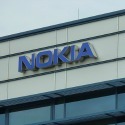Nokia Advances MEC for 5G, IoT
Vendor's AirFrame Data Center platform advances its vision of mobile-edge computing and provides its backbone for 5G and IoT.

Nokia took a big step forward in promoting mobile-edge computing with Monday's unveiling of the AirFrame Data Center platform -- a combo of telco cloud software and services, along with servers, switches and storage units -- that will provide its backbone for 5G and the Internet of Things (IoT). (See Nokia Unveils Telco Cloud Hardware Platform.)
Nokia Networks has been the biggest proponent of mobile-edge computing (MEC), pushing IT and cloud-computing capabilities in the Radio Access Network (RAN) as close to mobile subscribers as possible, for some time now, but today's announcement completes its strategy. MEC will be crucial to operating the programmable, agile networks with extremely low latency, massive throughput and security that 5G and IoT necessitate, and it was a key impetus to AirFrame. (See Mobile-Edge Computing Group Gets Going.)
"We are bringing together a hardware architecture optimized for low latency with virtual improvements to the cloud stack and acceleration techniques to offload some workloads from the main CPUs for special needs of telco customers -- all built in the cloud for centralized and distributed data center contributions," Henri Tervonen, VP of Nokia mobile broadband infrastructure, said on a call with media.
It's not too late to sign up for the Data Center Interconnect Summit or Big Telecom Event, June 9-10 in Chicago. Get yourself registered today or get left behind!
The emphasis on performance accelerators and distributed micro-cloud stands out the most to Heavy Reading analyst Gabriel Brown, who calls Nokia's performance argument "interesting."
"Nokia is essentially proposing a high-performance, telco-grade cloud platform using hardware accelerators where needed, yet also trying to capture the economics of COTS hardware," Brown says. "This balance is important for the entire NFV project and it differs by workload -- Cloud RAN, for example, will need accelerators for the foreseeable future, but other applications may not."
Brown adds, "Distributed data centers is also an important question, and one that the industry doesn't have a final answer to yet, although what we can be fairly sure about is that the optimal architecture will vary between operators."
Heavy Reading analyst Roz Roseboro agrees with Brown's assertions, and notes that the issue of centralized versus distributed is particularly important for latency-sensitive applications like voice and IoT, for which telcos want to have their NFV gear as close to the edge as possible.
What the data center means from a telco context is something Roseboro will be addressing at next week's Data Center Interconnect Summit at the Big Telecom Event in Chicago. From her point of view, it is likely to encompass a range of sizes and locations, will use telcos' existing central office locations to support NFV and will be modular to scale cost effectively.
"It is very likely the telcos will use their existing central office locations to support NFV, and there are hundreds (thousands) of those in the US," she said. "They'll want modular solutions that can scale cost effectively in order to support lots of smaller locations as opposed to a few huge ones."
Other equipment makers are advocating a similar position as Nokia with regard to distributed data centers. When asked on the call how AirFrame differs from Ericsson AB (Nasdaq: ERIC)'s hyperscale data center system or Huawei Technologies Co. Ltd. 's data center architecture, Tervonen noted that its accelerator technique will make it perform better in radio applications, and stressed the fact that it's built on open hardware and software components. (See Ericsson, Intel Target Telco Data Centers.)
"That will allow our customers to build solutions that can interoperate well with their existing hardware and software components and competitor hardware and software components." he said. "There's no vendor lock-in on our customer base side on which components they can use."
— Sarah Thomas, 

 , Editorial Operations Director, Light Reading
, Editorial Operations Director, Light Reading
About the Author(s)
You May Also Like




_International_Software_Products.jpeg?width=300&auto=webp&quality=80&disable=upscale)







